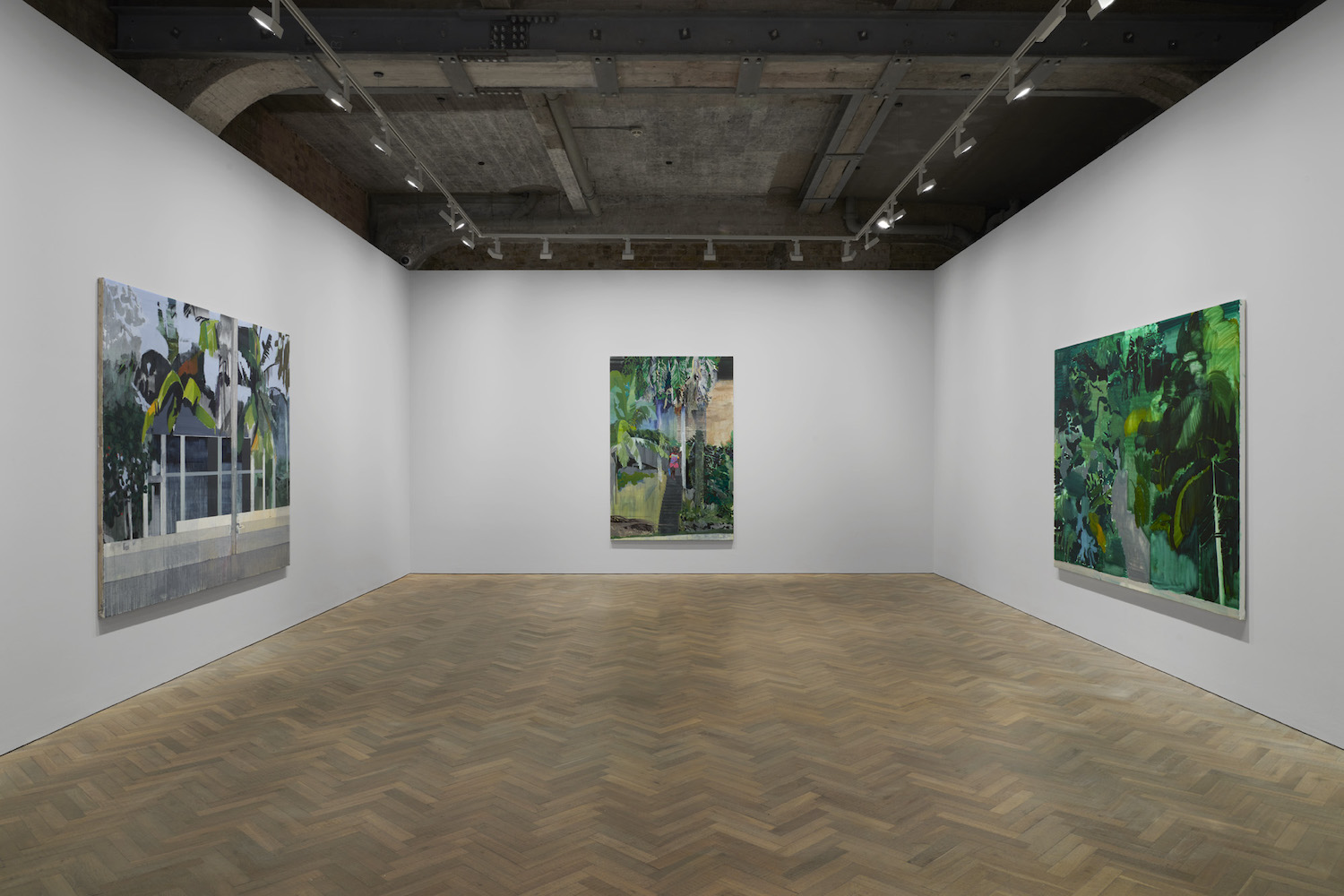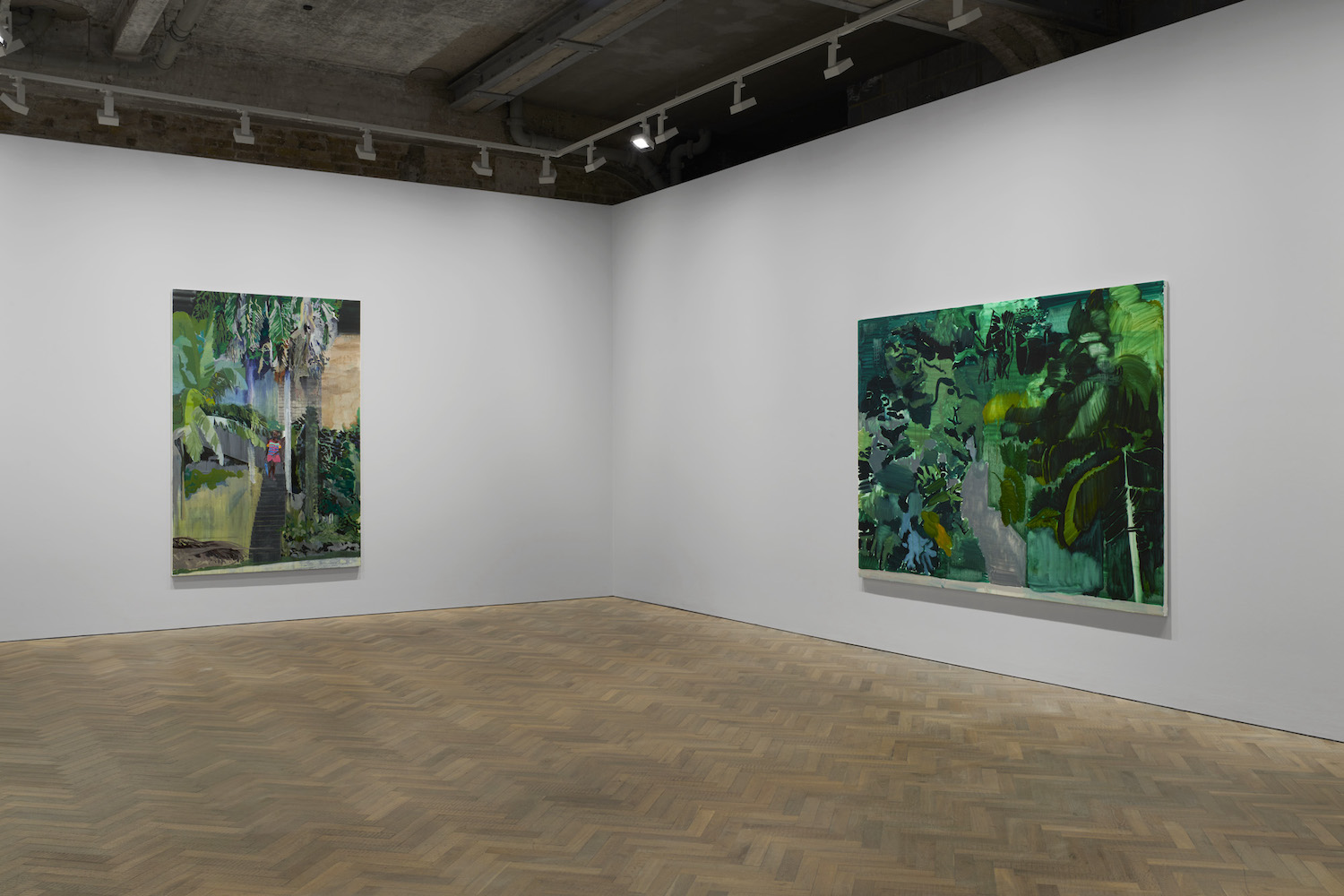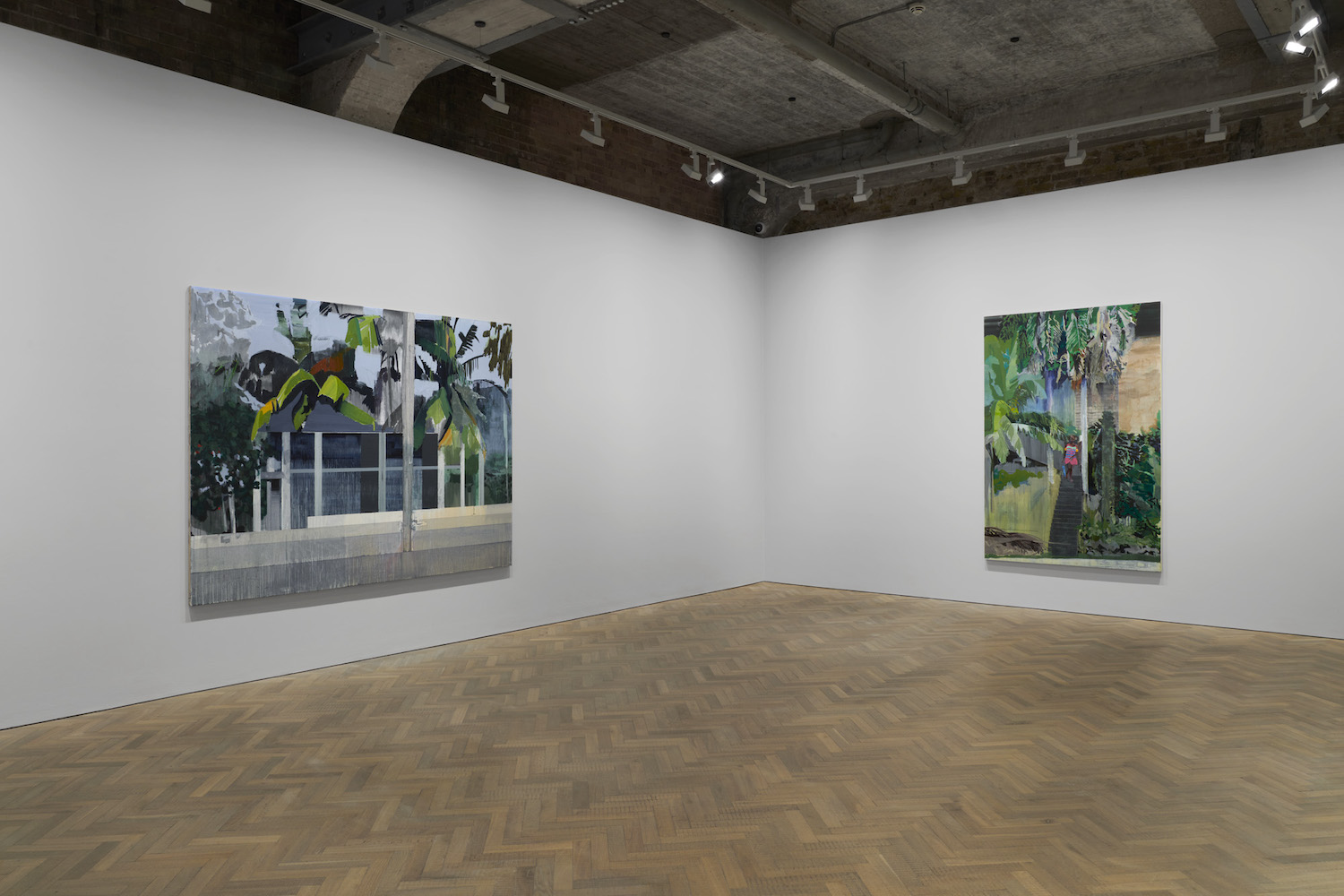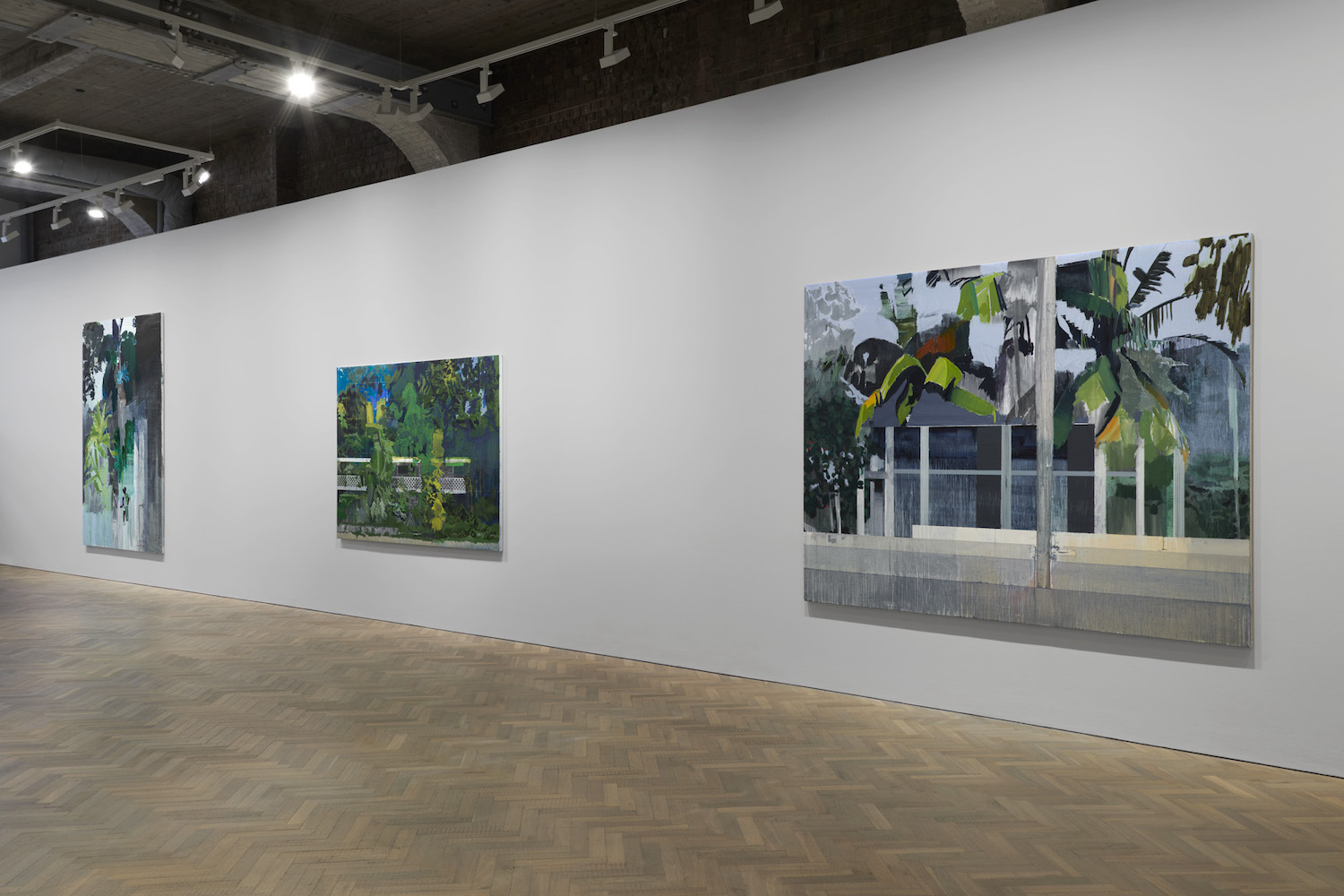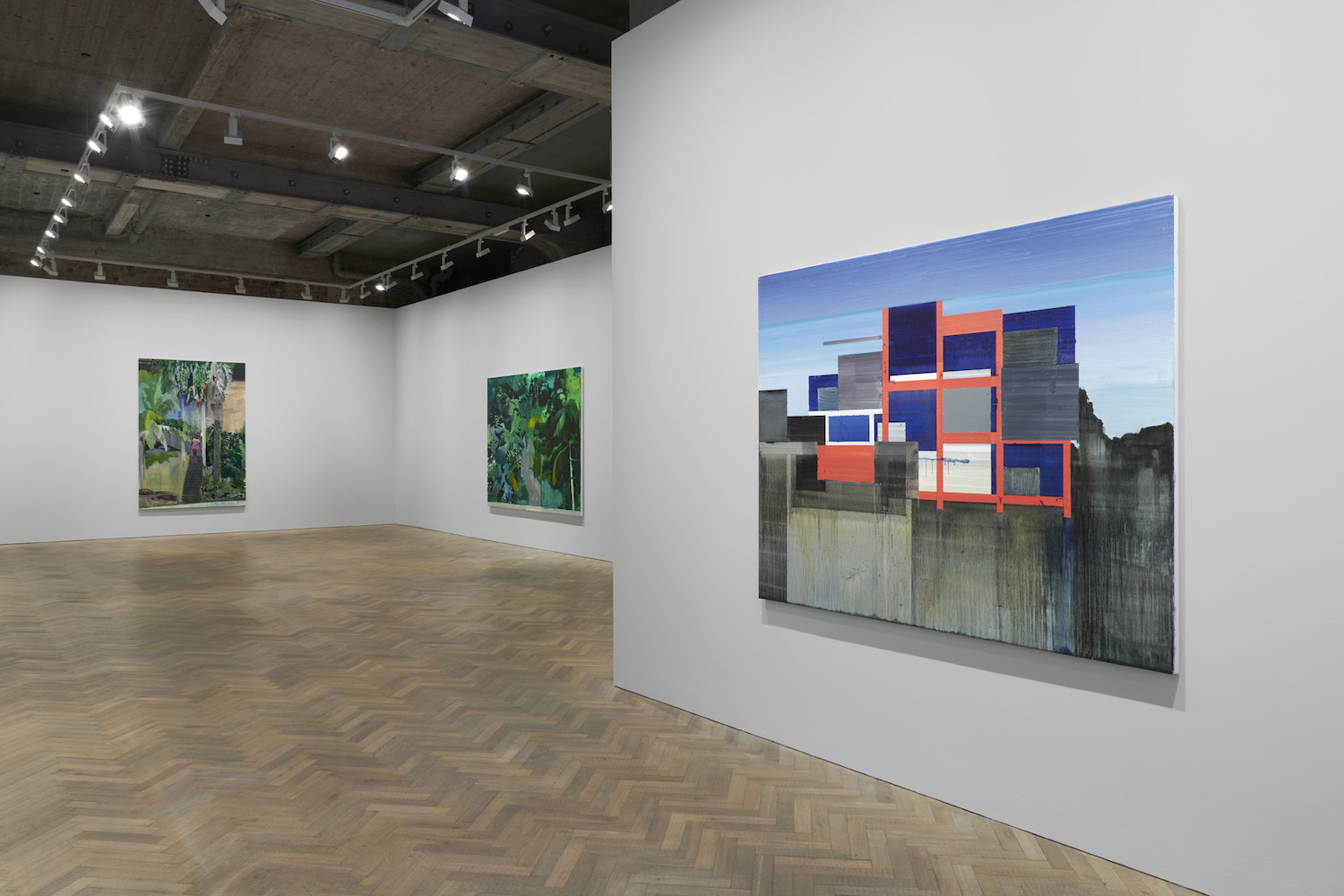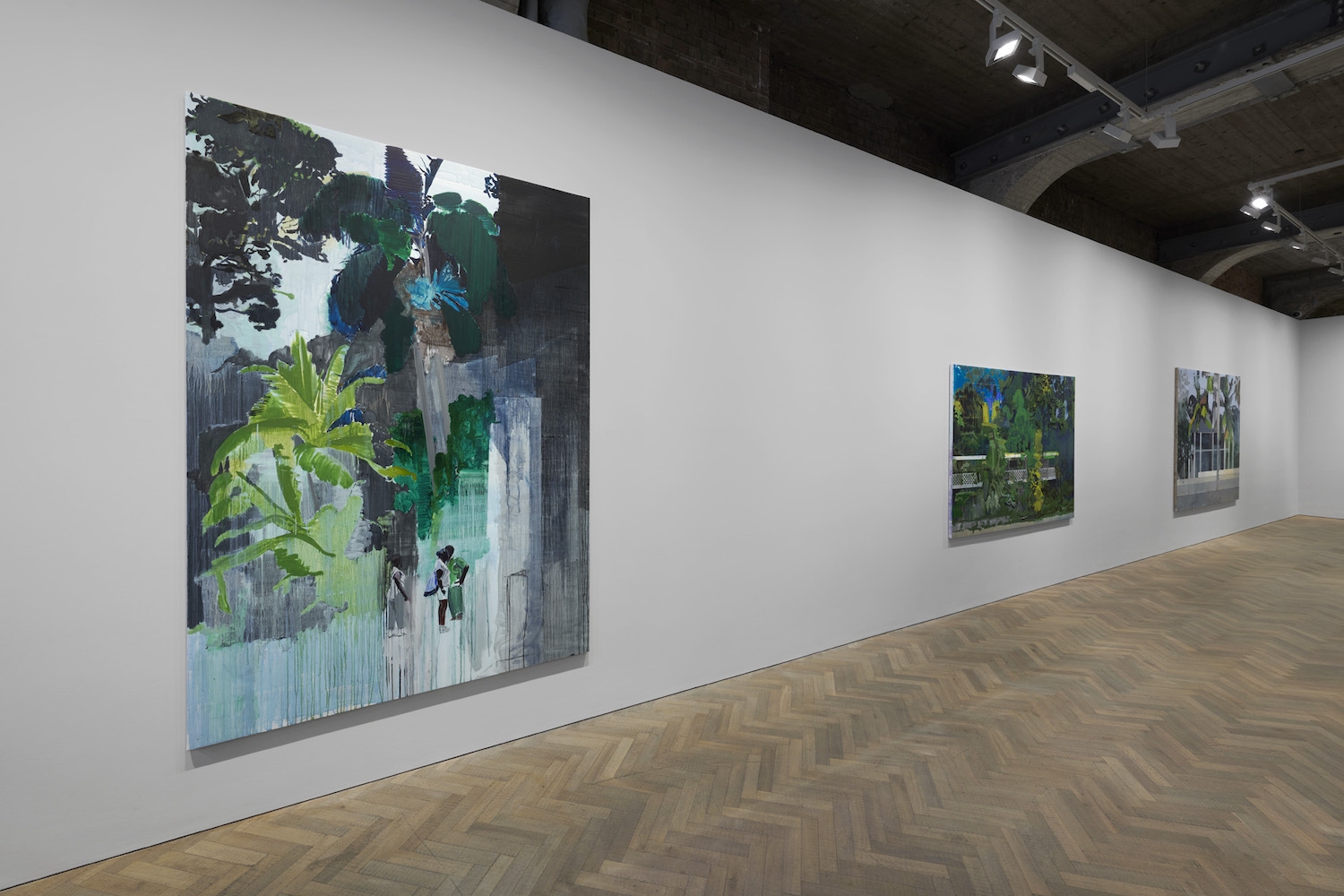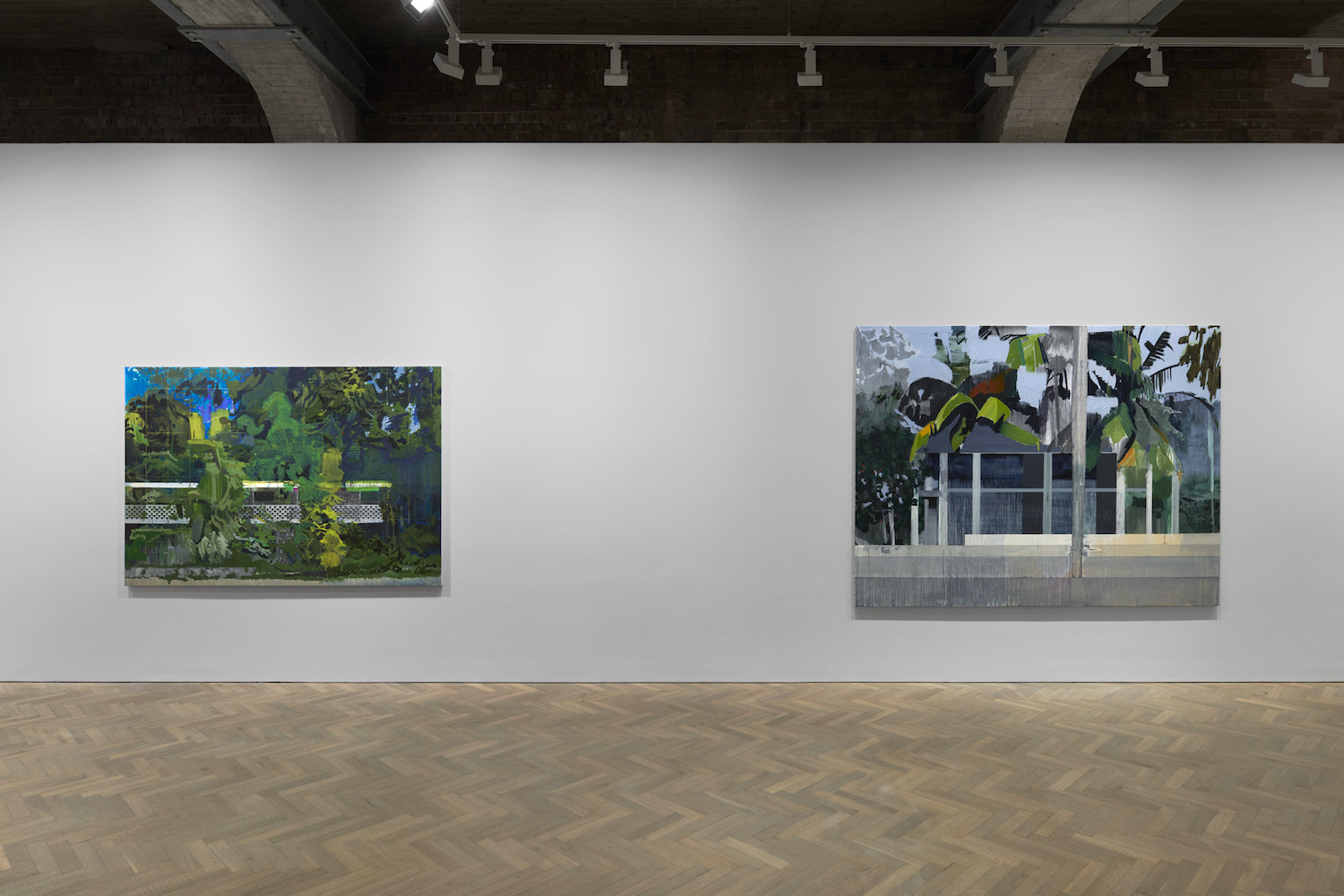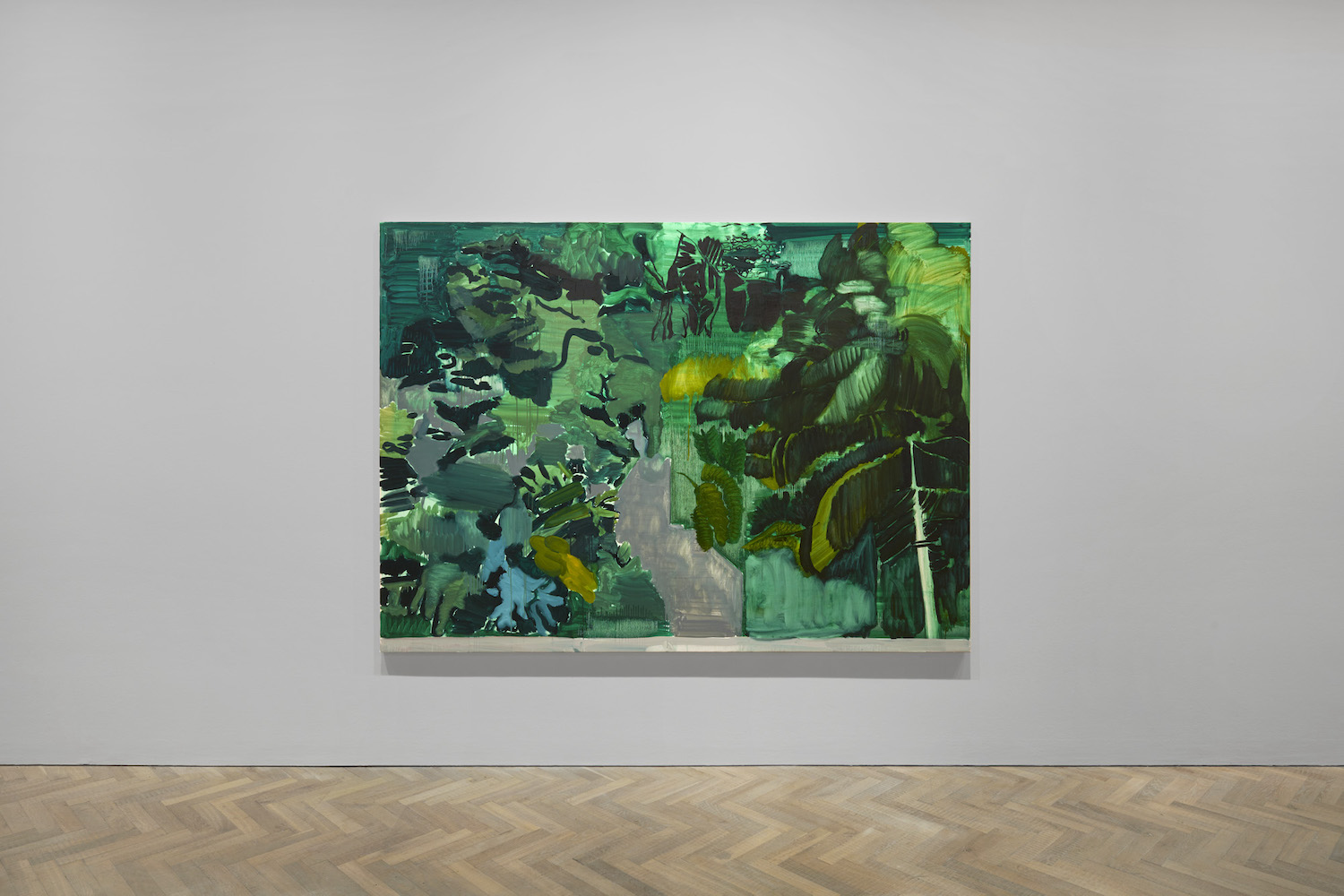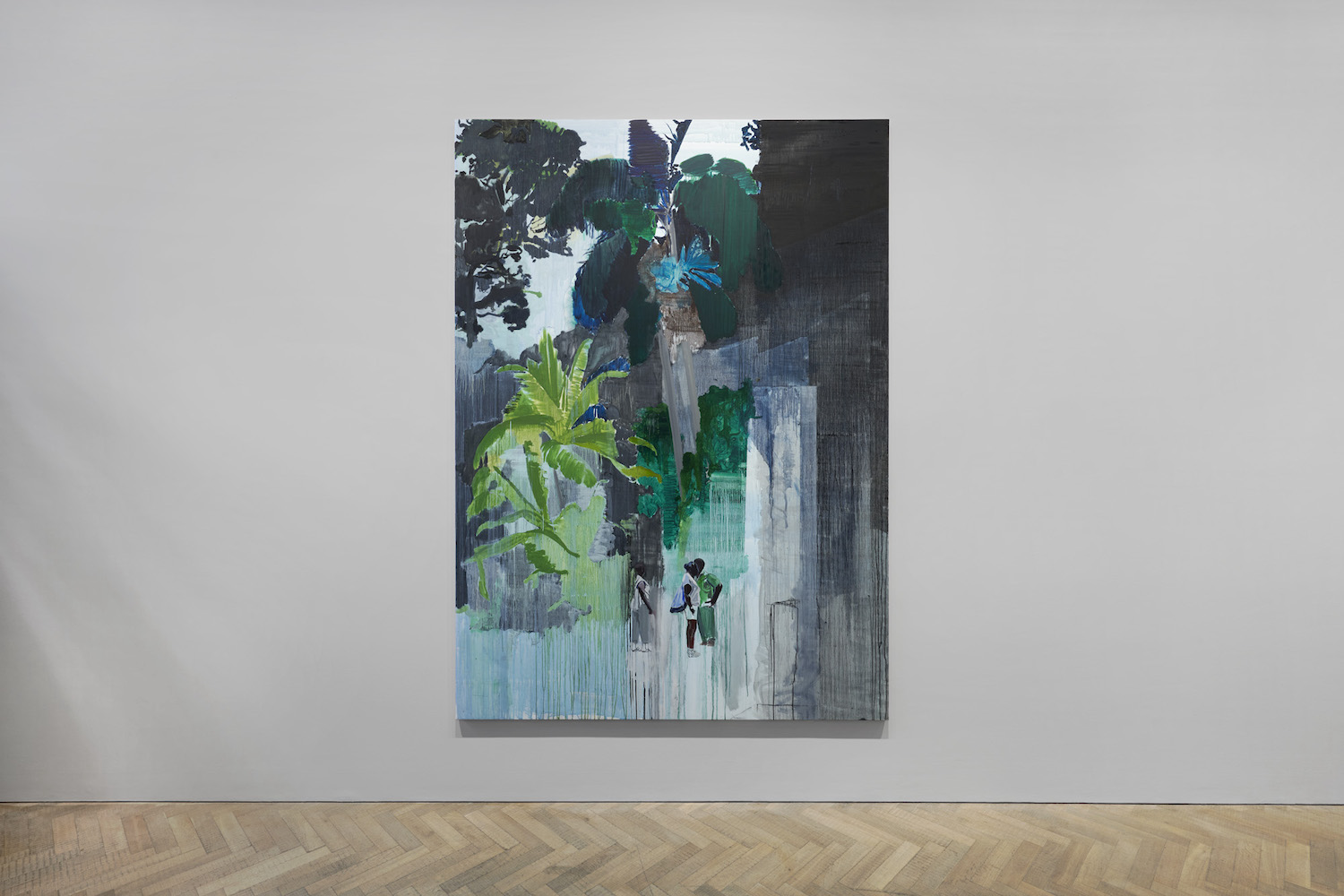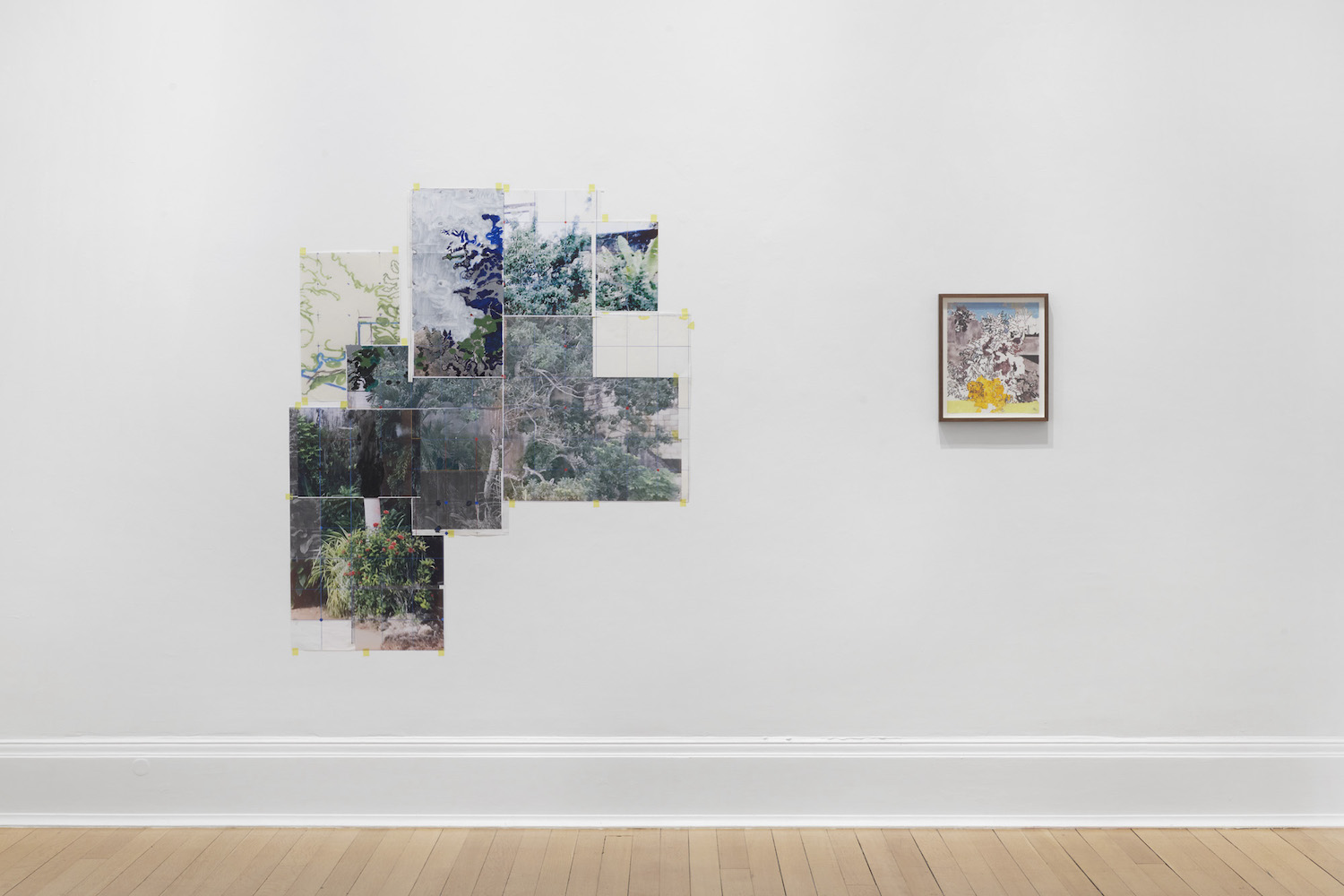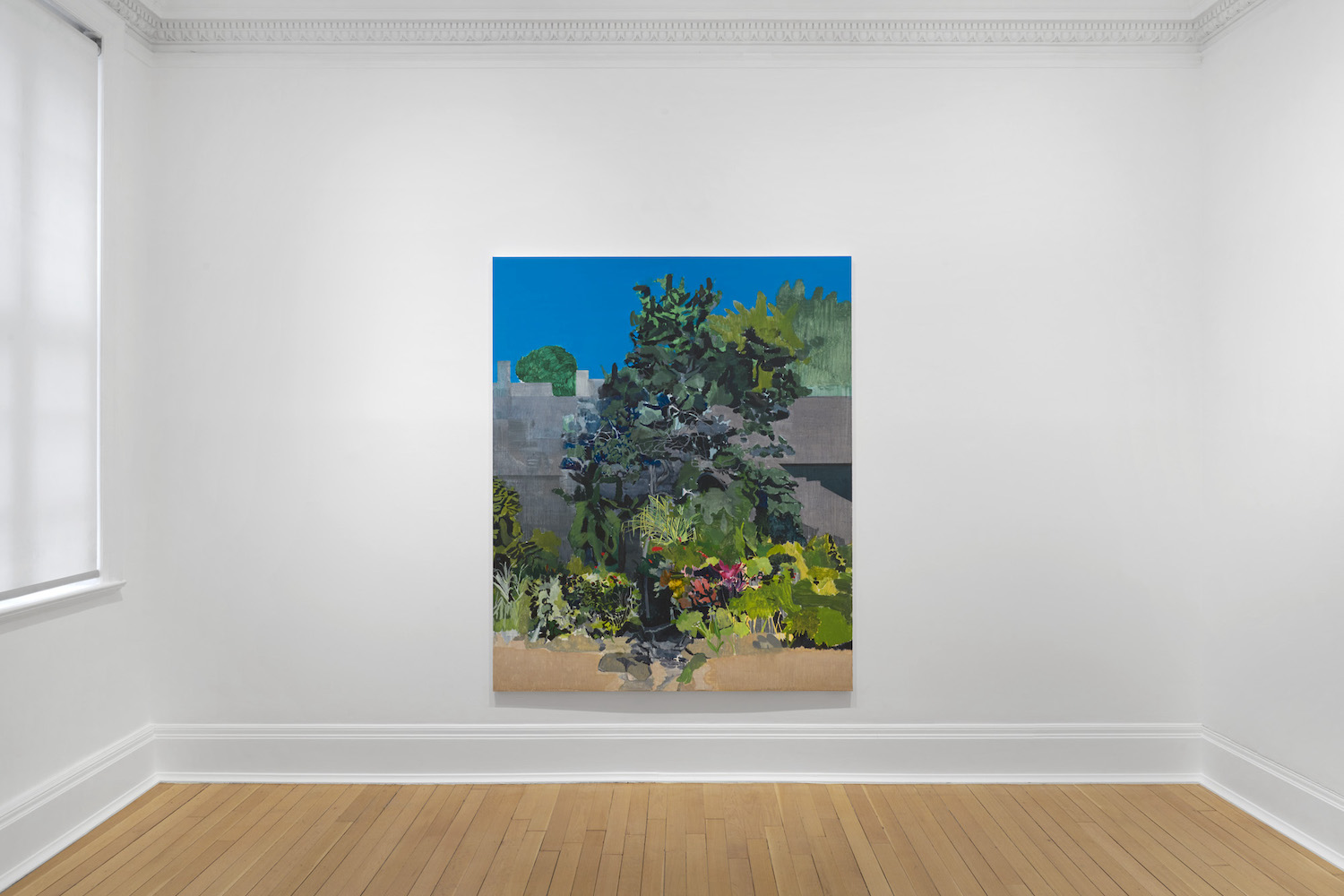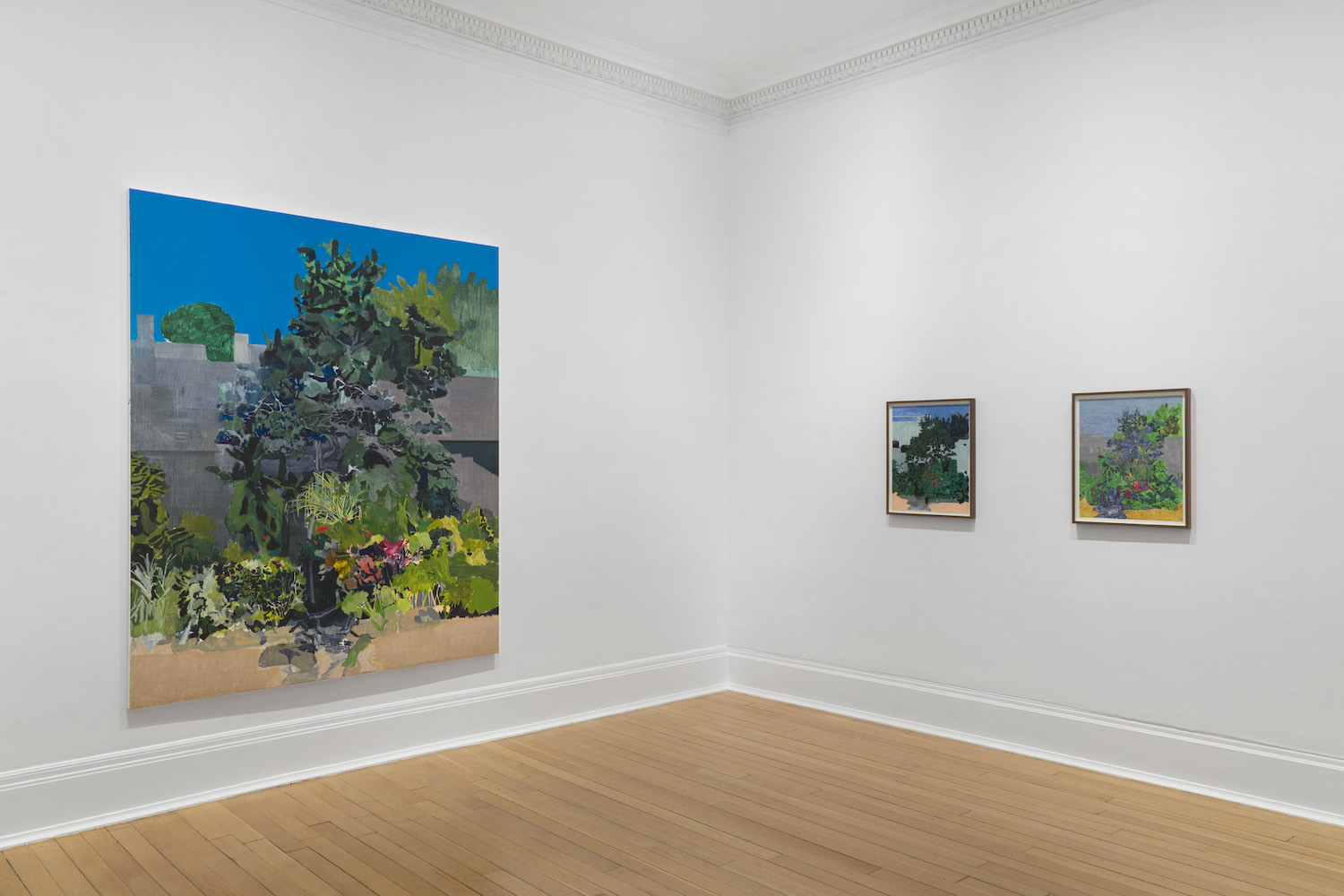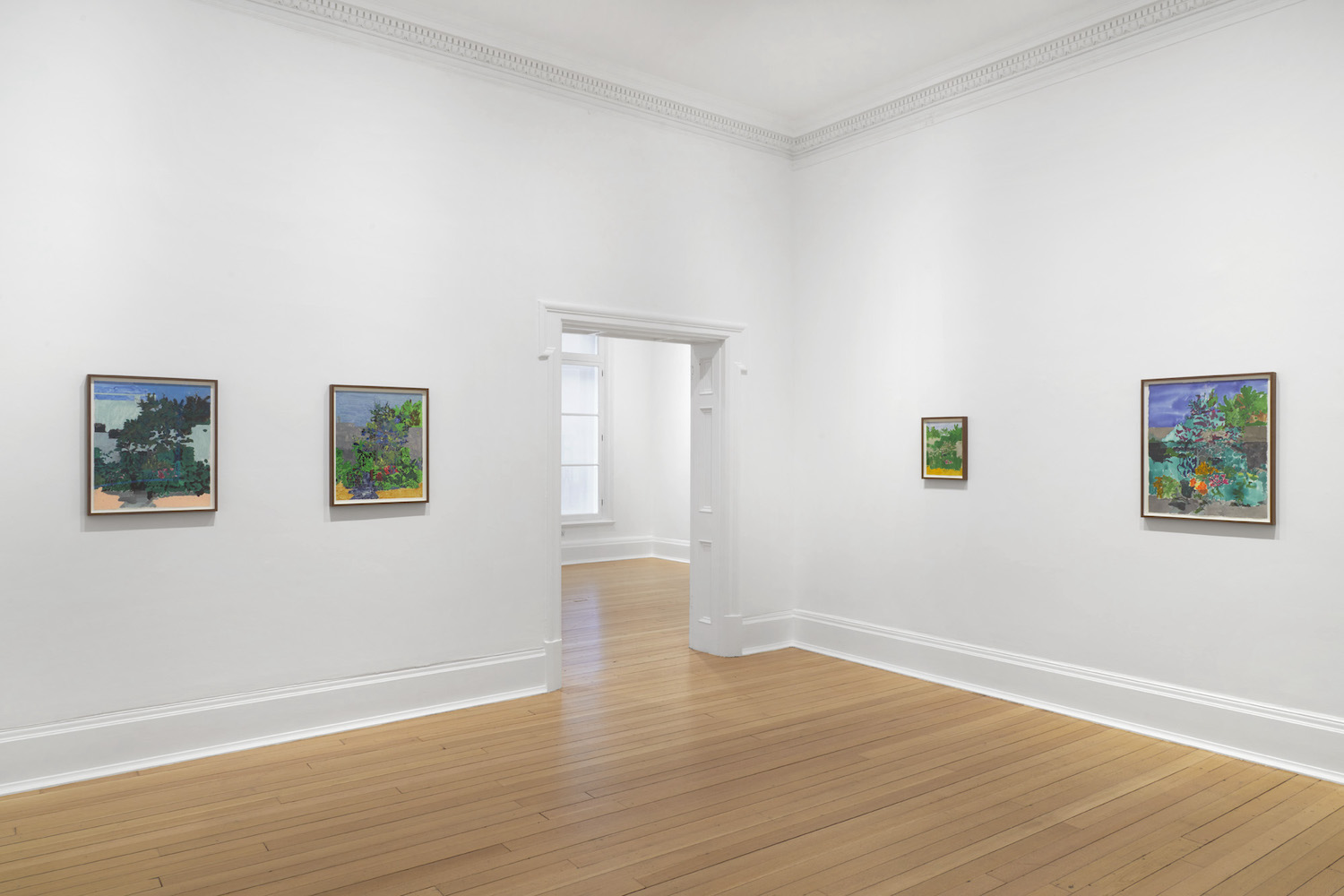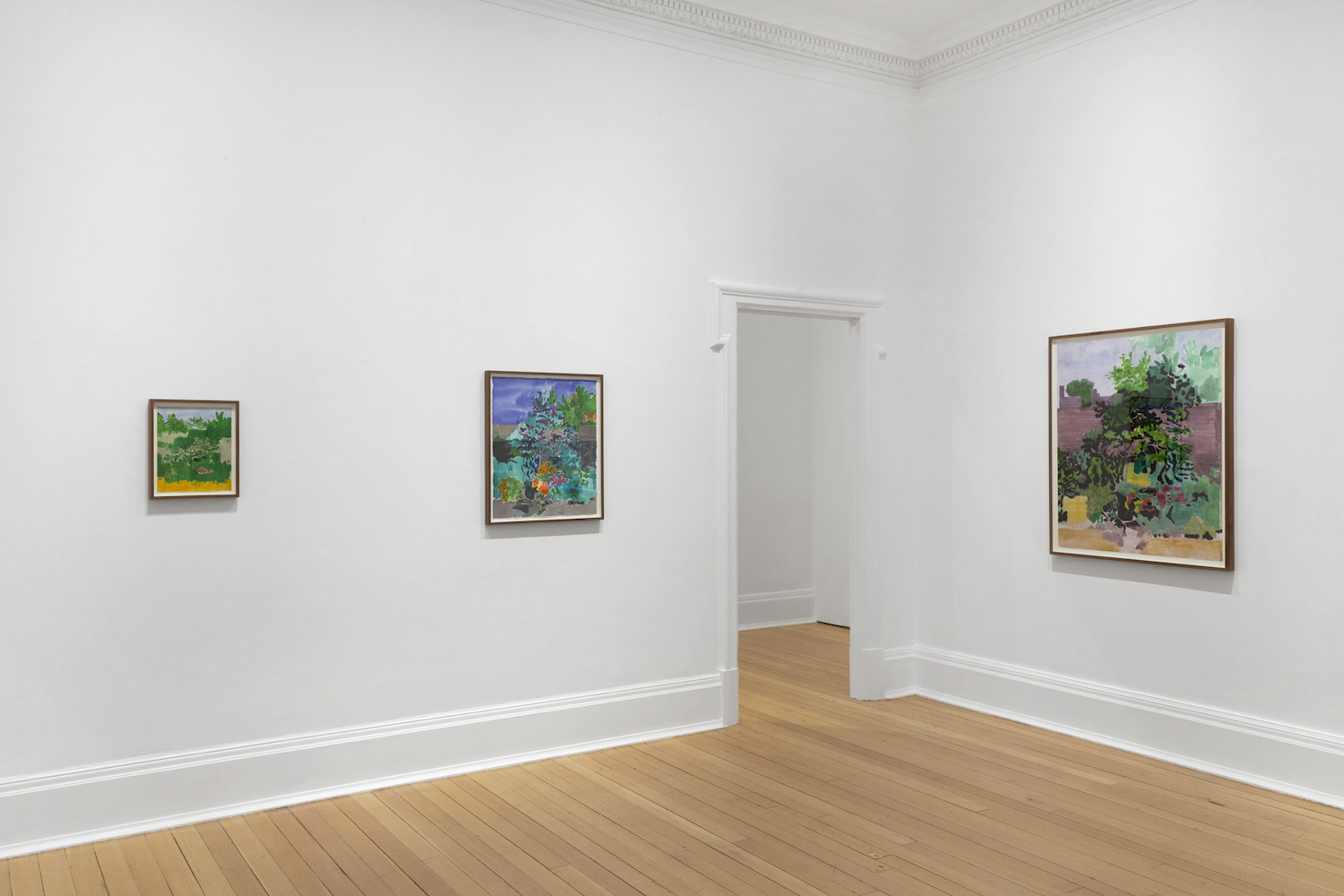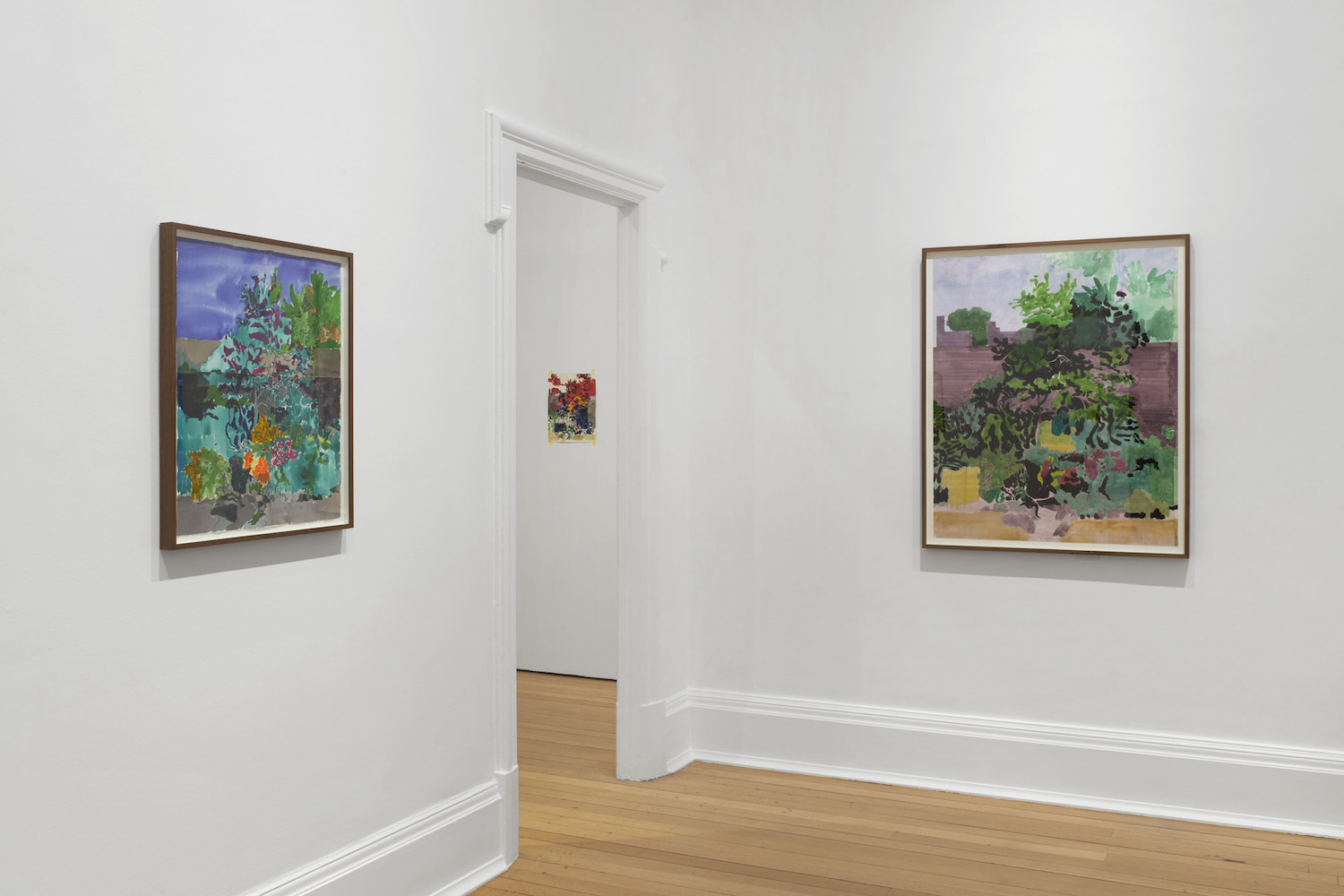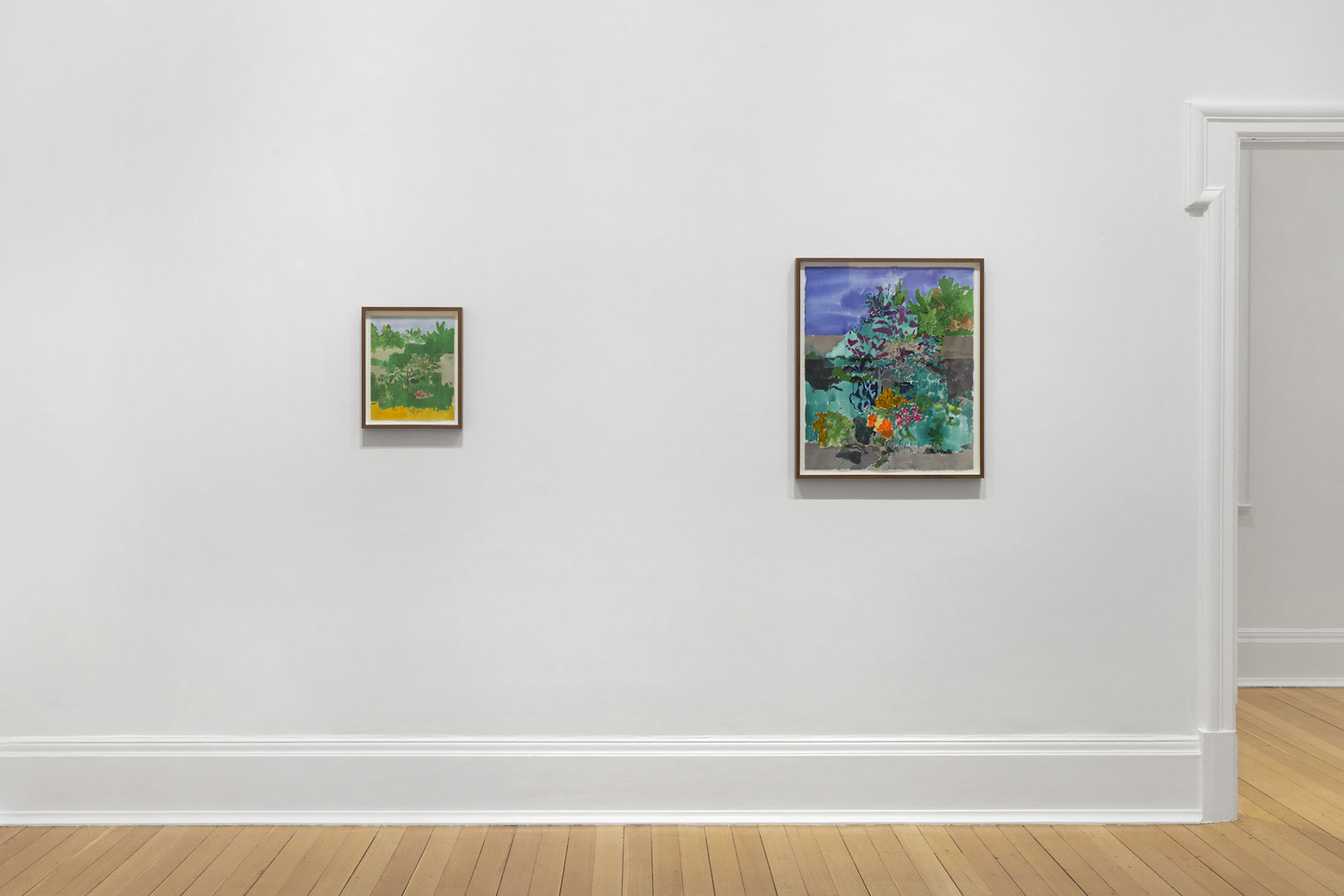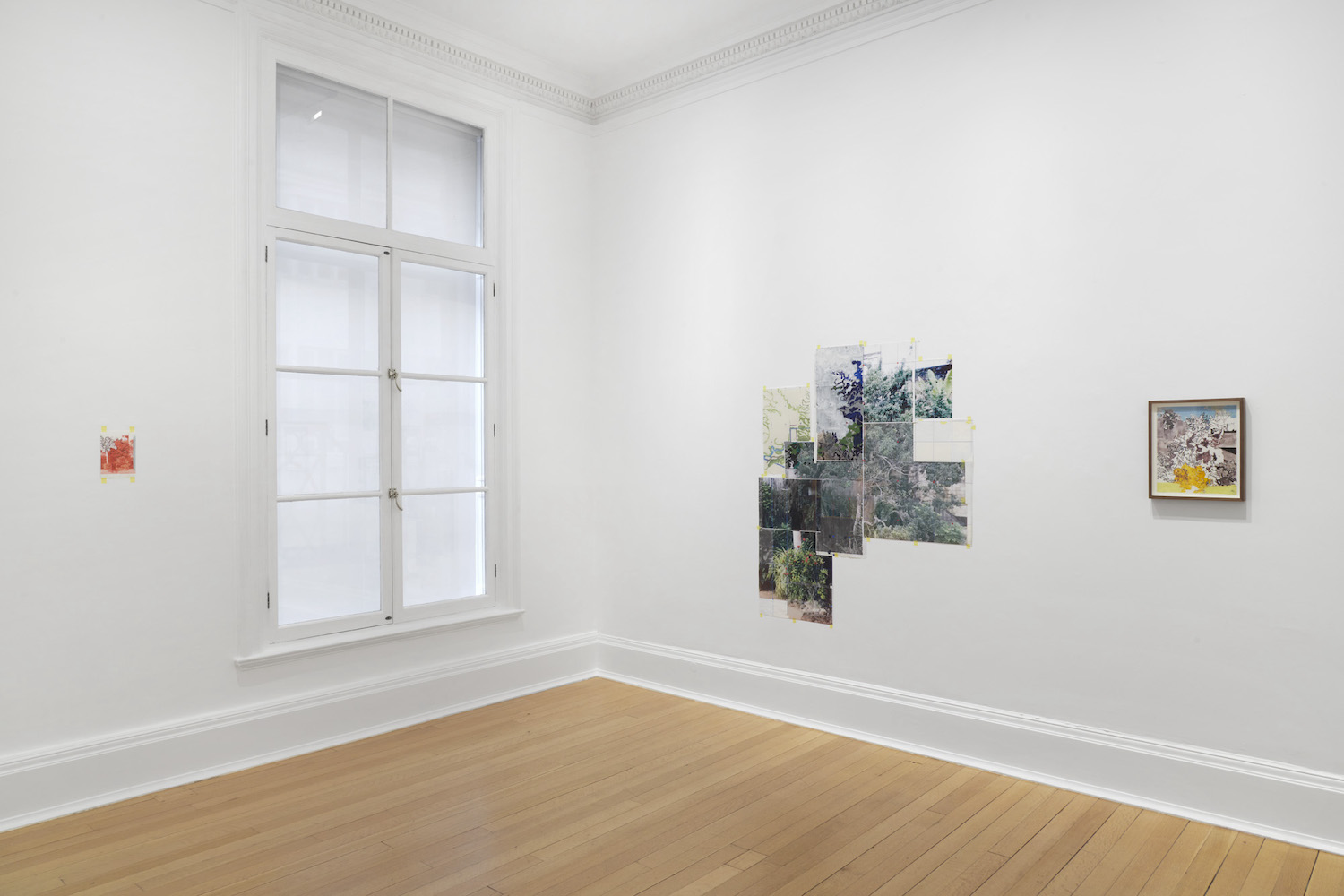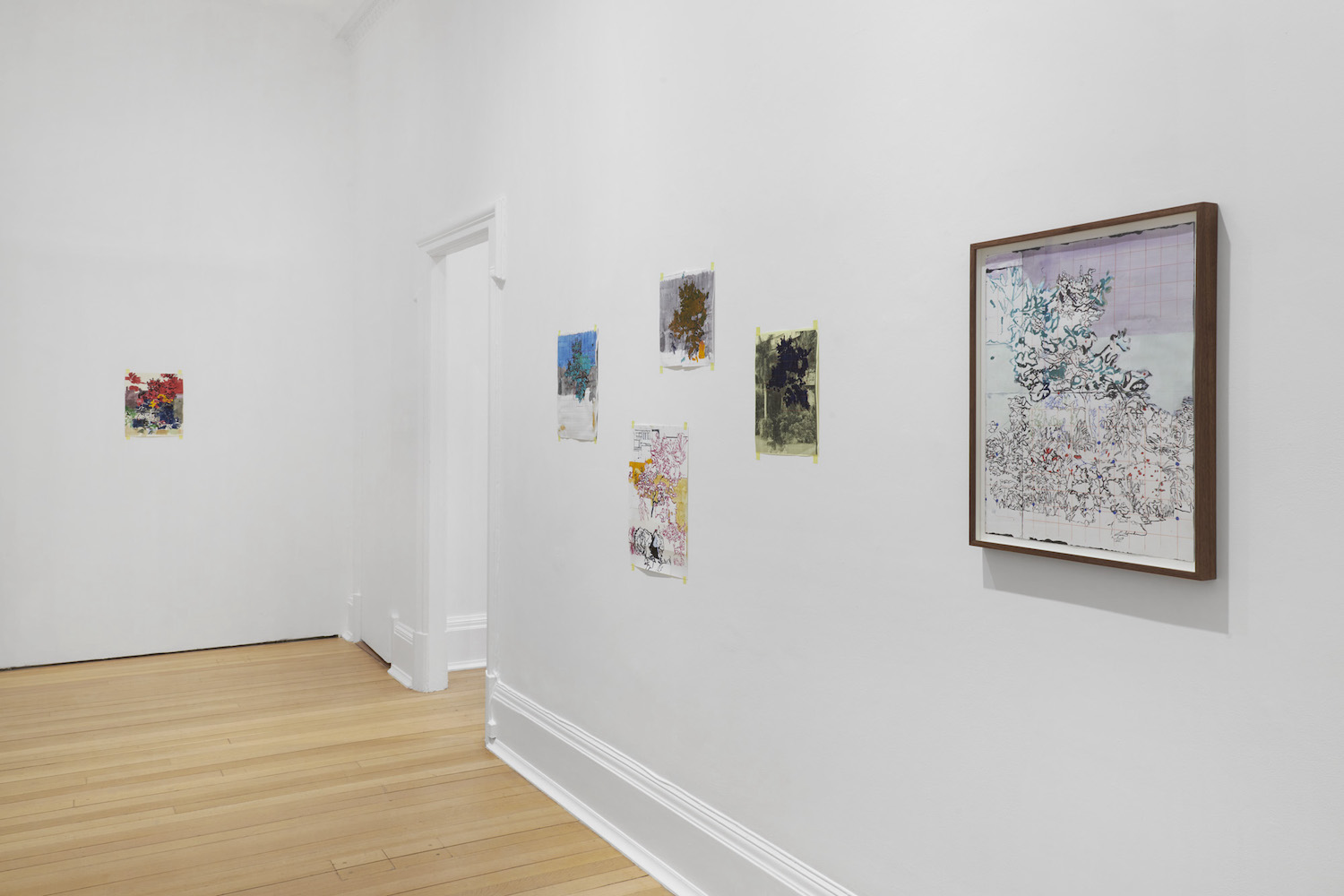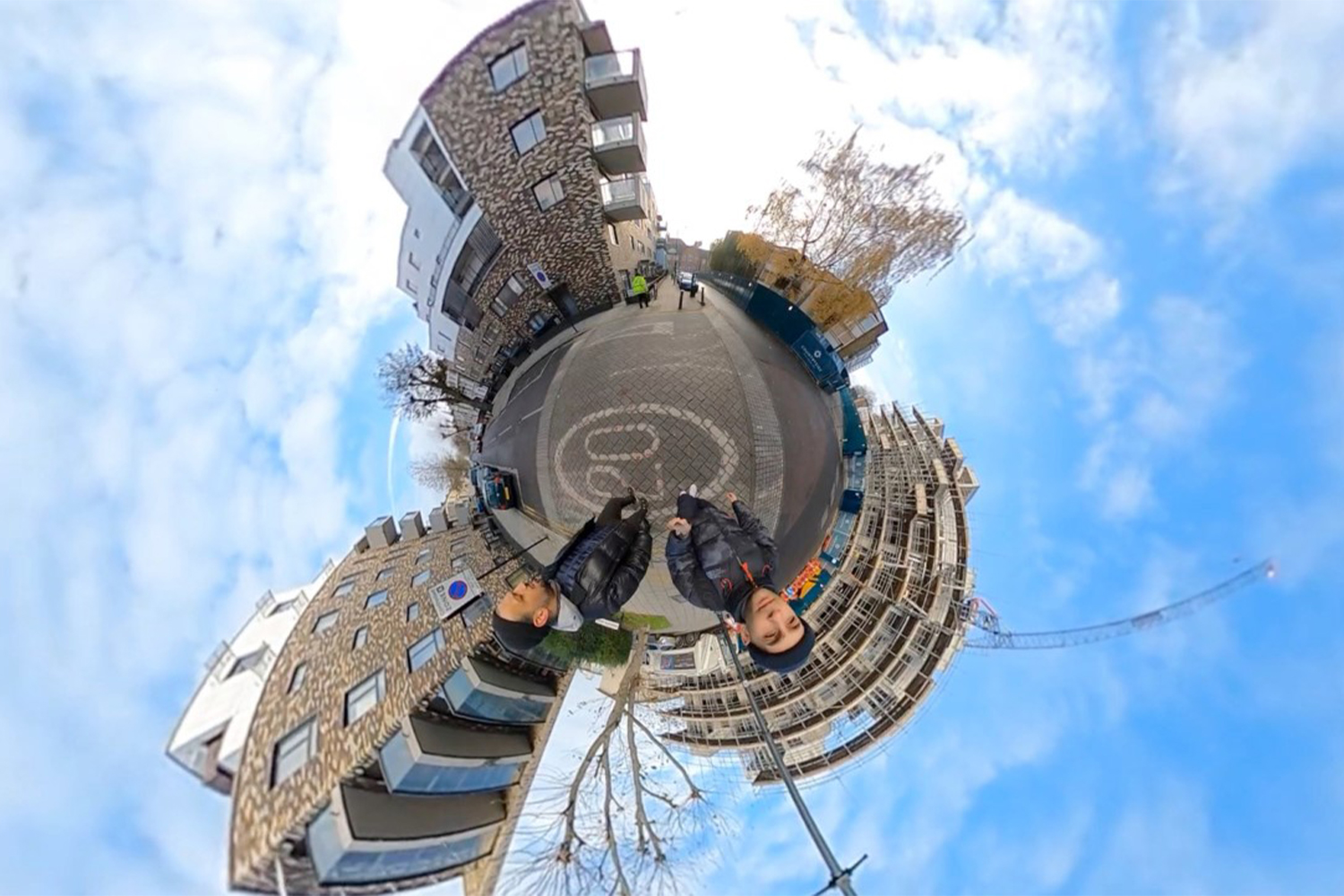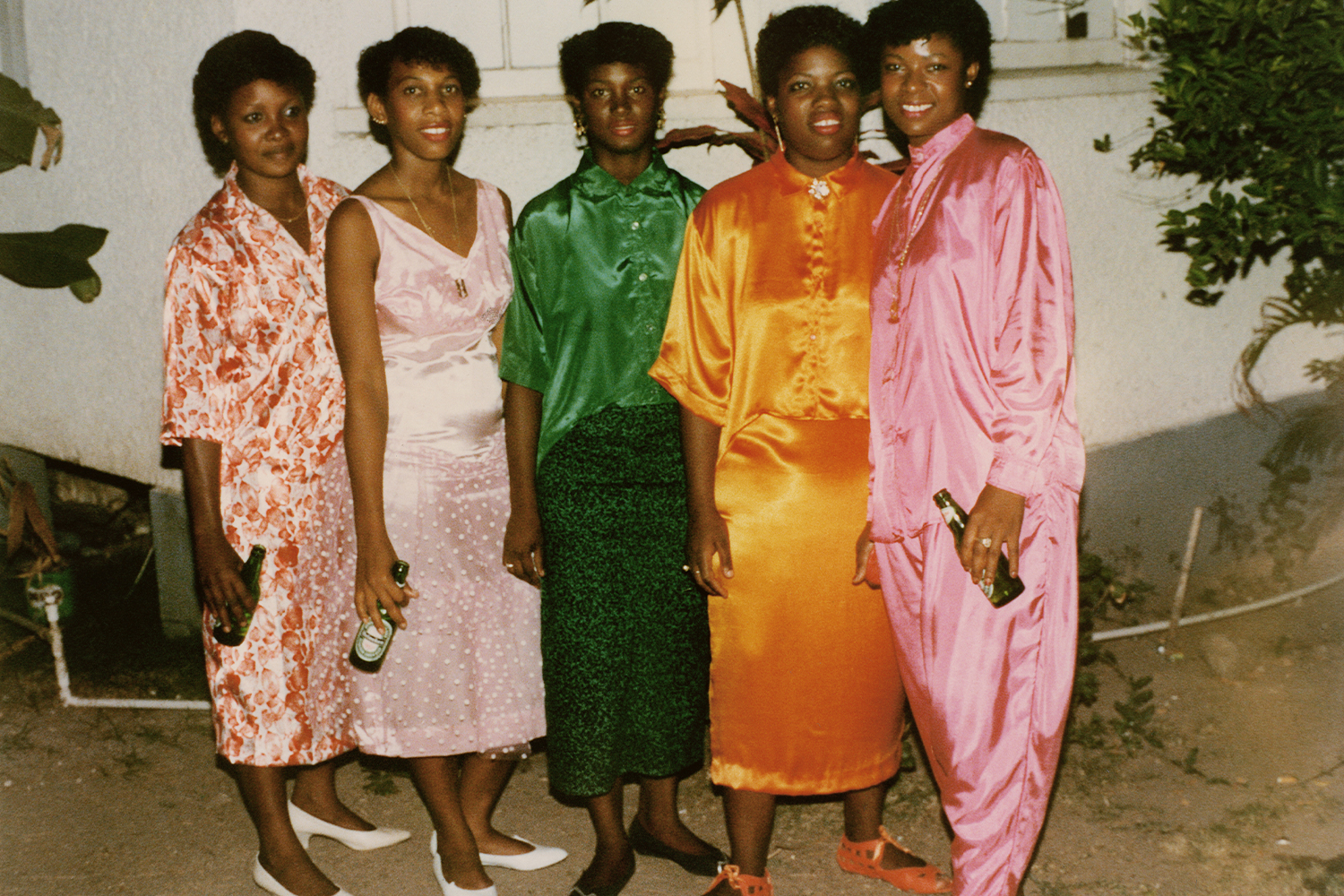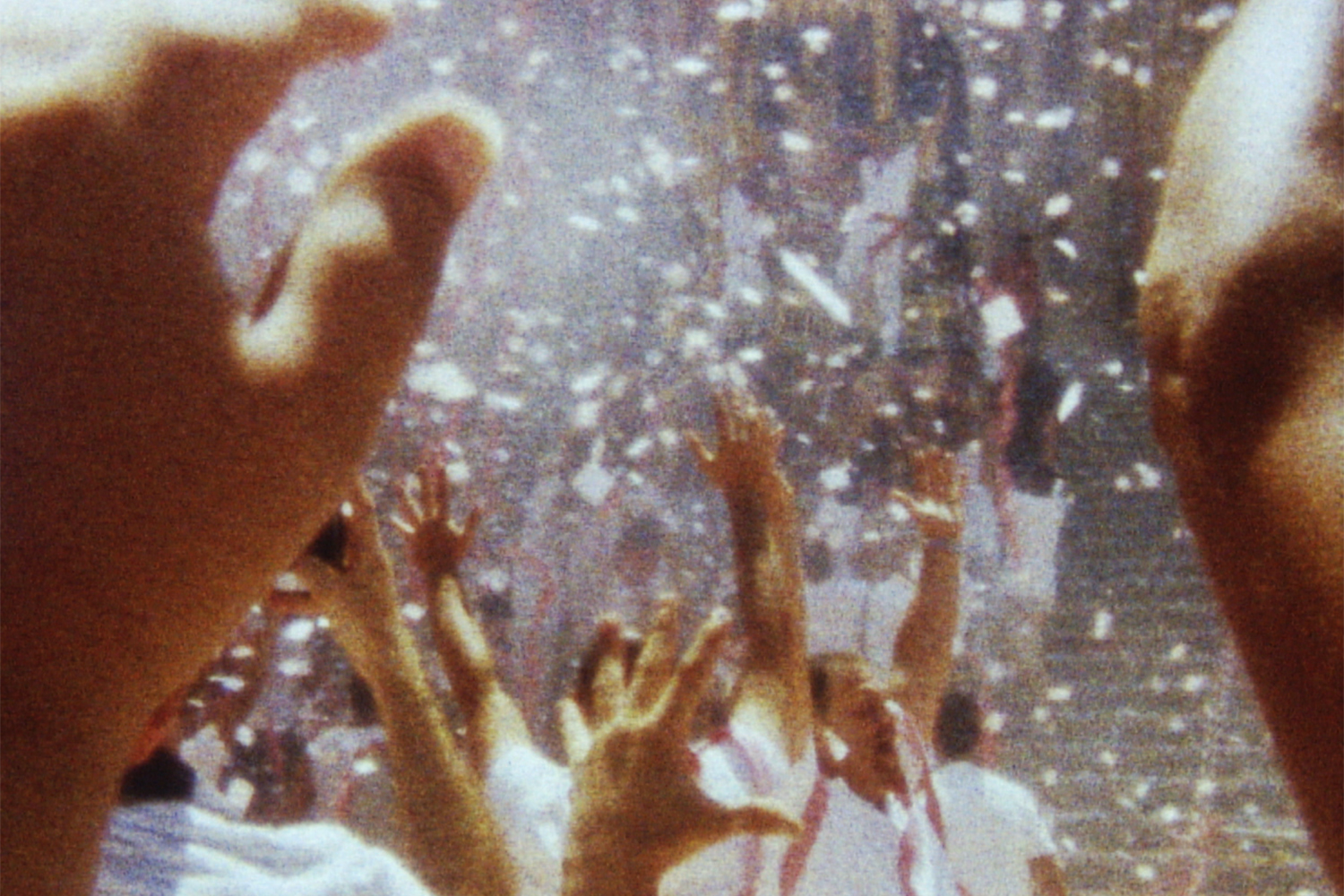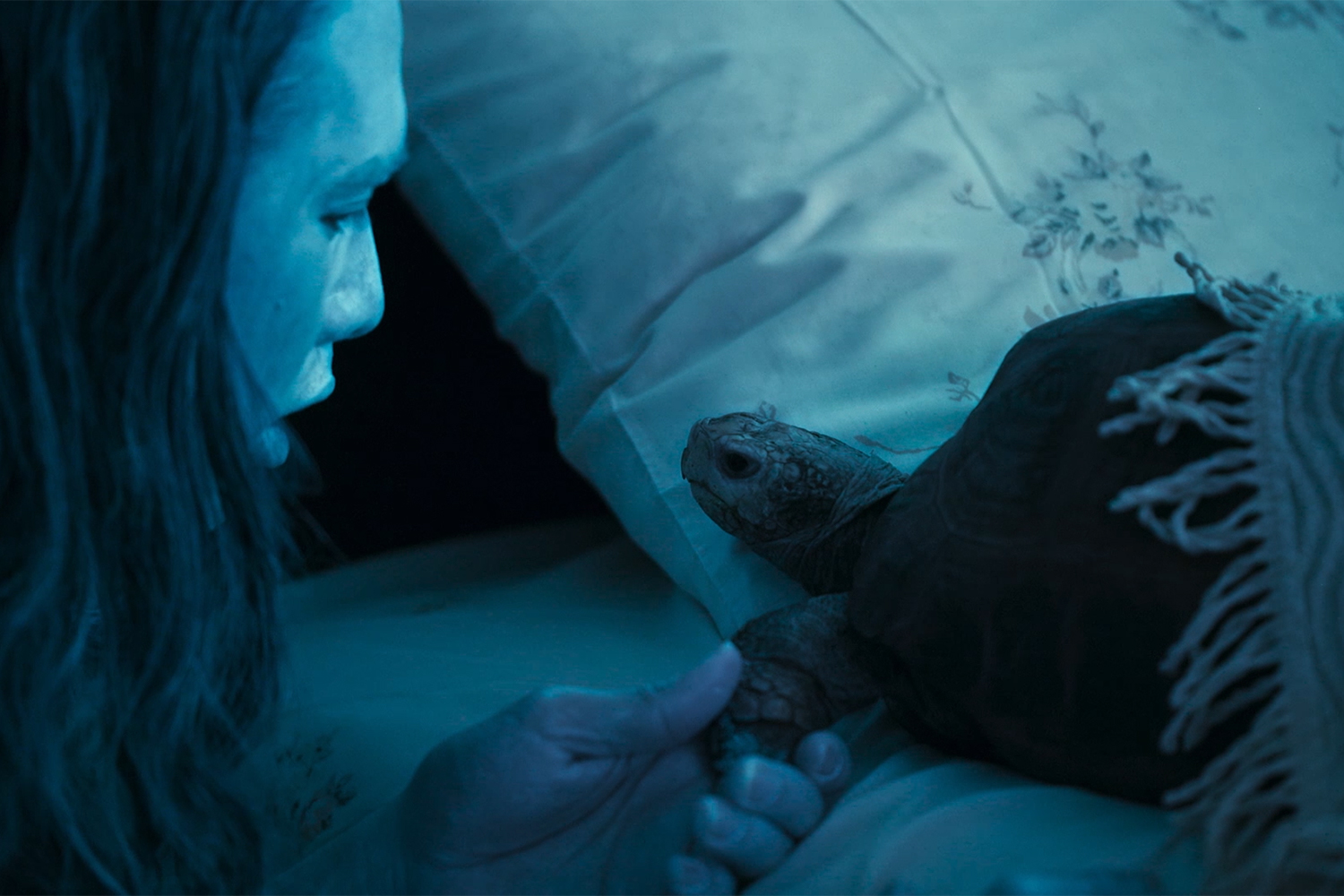Hurvin Anderson, “Reverb.” Exhibition view at Thomas Dane Gallery, London, 2021. Photography by Ben Westoby. Courtesy of the artist and Thomas Dane Gallery, London. © Hurvin Anderson.
Hurvin Anderson, “Reverb.” Exhibition view at Thomas Dane Gallery, London, 2021. Photography by Ben Westoby. Courtesy of the artist and Thomas Dane Gallery, London. © Hurvin Anderson.
Hurvin Anderson, “Reverb.” Exhibition view at Thomas Dane Gallery, London, 2021. Photography by Ben Westoby. Courtesy of the artist and Thomas Dane Gallery, London. © Hurvin Anderson.
Hurvin Anderson, “Reverb.” Exhibition view at Thomas Dane Gallery, London, 2021. Photography by Ben Westoby. Courtesy of the artist and Thomas Dane Gallery, London. © Hurvin Anderson.
Hurvin Anderson, “Reverb.” Exhibition view at Thomas Dane Gallery, London, 2021. Photography by Ben Westoby. Courtesy of the artist and Thomas Dane Gallery, London. © Hurvin Anderson.
Hurvin Anderson, “Reverb.” Exhibition view at Thomas Dane Gallery, London, 2021. Photography by Ben Westoby. Courtesy of the artist and Thomas Dane Gallery, London. © Hurvin Anderson.
Hurvin Anderson, “Reverb.” Exhibition view at Thomas Dane Gallery, London, 2021. Photography by Ben Westoby. Courtesy of the artist and Thomas Dane Gallery, London. © Hurvin Anderson.
Hurvin Anderson, “Reverb.” Exhibition view at Thomas Dane Gallery, London, 2021. Photography by Ben Westoby. Courtesy of the artist and Thomas Dane Gallery, London. © Hurvin Anderson.
Hurvin Anderson, “Reverb.” Exhibition view at Thomas Dane Gallery, London, 2021. Photography by Ben Westoby. Courtesy of the artist and Thomas Dane Gallery, London. © Hurvin Anderson.
An unfinished, abandoned beachside resort, where nature has subsumed man-made limestone and concrete structures, provides inspiration for resplendent, imaginary landscapes that meld figuration with abstraction. Hurvin Anderson’s series “Jamaican Hotel,” at Thomas Dane Gallery, includes four new monumental works — Ashanti Blood, Skylarking, Cordia, and Genera Palmurum (all 2021) — that build upon the artist’s exploration of diasporic identity. Titled “Reverb,” the exhibition travels beyond Anderson’s favored subject of the British barbershop to confront the artist’s relationship with his family’s Jamaican homeland.
Raised on a romanticized vision of Jamaica, Anderson notes that “a lot of this painting is fighting that romance.” Largely figureless, alienation and isolation are key themes of “Jamaican Hotel.” The eerily empty buildings of Higher Heights (2020), represented by flat, geometric planes, allude simultaneously to the development and destruction of tourism as well as its environmental impact. Permeated by a sense of curiosity and discovery, works like Jungle Garden (2020), Limestone Wall (2020), and Grace Jones (2020) contrast detailed stencils of palms with other tropical foliage, while titles like Genera Palmurum (the classification of palm species), Cordia, and Ashanti Blood (both flowering shrubs) reference Jamaica’s ecology.
Hurvin Anderson, “Reverb.” Exhibition view at Thomas Dane Gallery, London, 2021. Photography by Ben Westoby. Courtesy of the artist and Thomas Dane Gallery, London. © Hurvin Anderson.
Hurvin Anderson, “Reverb.” Exhibition view at Thomas Dane Gallery, London, 2021. Photography by Ben Westoby. Courtesy of the artist and Thomas Dane Gallery, London. © Hurvin Anderson.
Hurvin Anderson, “Reverb.” Exhibition view at Thomas Dane Gallery, London, 2021. Photography by Ben Westoby. Courtesy of the artist and Thomas Dane Gallery, London. © Hurvin Anderson.
Hurvin Anderson, “Reverb.” Exhibition view at Thomas Dane Gallery, London, 2021. Photography by Ben Westoby. Courtesy of the artist and Thomas Dane Gallery, London. © Hurvin Anderson.
Hurvin Anderson, “Reverb.” Exhibition view at Thomas Dane Gallery, London, 2021. Photography by Ben Westoby. Courtesy of the artist and Thomas Dane Gallery, London. © Hurvin Anderson.
Hurvin Anderson, “Reverb.” Exhibition view at Thomas Dane Gallery, London, 2021. Photography by Ben Westoby. Courtesy of the artist and Thomas Dane Gallery, London. © Hurvin Anderson.
Hurvin Anderson, “Reverb.” Exhibition view at Thomas Dane Gallery, London, 2021. Photography by Ben Westoby. Courtesy of the artist and Thomas Dane Gallery, London. © Hurvin Anderson.
Hurvin Anderson, “Reverb.” Exhibition view at Thomas Dane Gallery, London, 2021. Photography by Ben Westoby. Courtesy of the artist and Thomas Dane Gallery, London. © Hurvin Anderson.
Hurvin Anderson, “Reverb.” Exhibition view at Thomas Dane Gallery, London, 2021. Photography by Ben Westoby. Courtesy of the artist and Thomas Dane Gallery, London. © Hurvin Anderson.
An overlaid grid structure, characteristic of Anderson’s work, points 5 to the process of scaling up a painting while disrupting the viewer’s access to the landscape. Subtler than the artist’s earlier works that foreground chicken wire (Country Club Series: Chicken Wire, 2008) and grillwork (Welcome: Carib, 2005), here a barely perceptible matrix of gray lines advances and recedes, staking out a liminal space of diasporic identity. The artist expresses this verbally: “My struggle with Jamaica: I don’t know it and I know it.” What Stuart Hall termed “doubleness” — the feeling of similarity and difference on returning to the Caribbean after a long absence — encapsulates Anderson’s struggle with his own identity. As the last child of Windrush- generation parents, and the only one born in the UK, the artist experiences Jamaica through the diaspora and through his family’s memories. His enigmatic washes of paint, especially apparent in Skylarking, disintegrate the scene like a memory dissolving. Its three faceless, minuscule figures as if apparitions are dislocated from the background of large palms. They simultaneously belong and are alien.
“Reverb” links these monumental canvases of verdant landscape with Anderson’s extensive and meticulous process while cohering his painterly identity. The show begins with preparatory materials and studies: small photographs resembling satellite weather or
topographic maps are drawn and painted over, photocopied, collaged, and pasted to the wall with brightly colored tape. Experiments emphasize the essential process of image creation in which Anderson chooses to obscure or highlight compositional elements. He constructs meaning through formal choices. These paintings are as much introspective as inspiring of active viewing.

